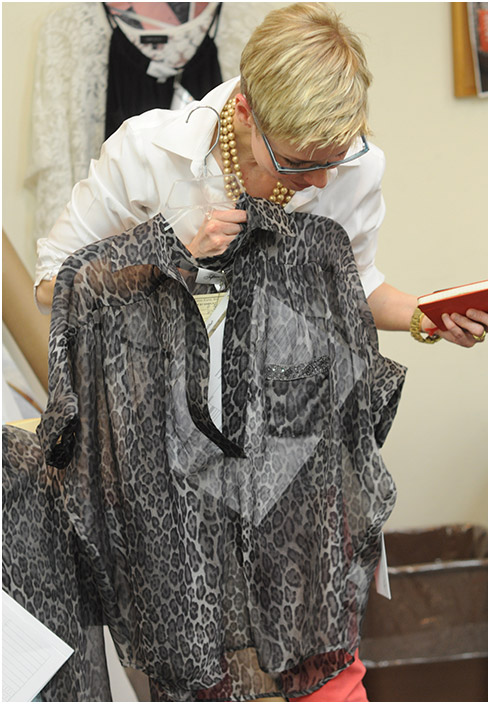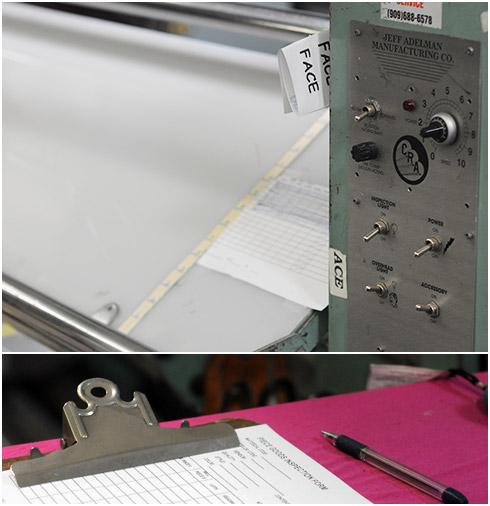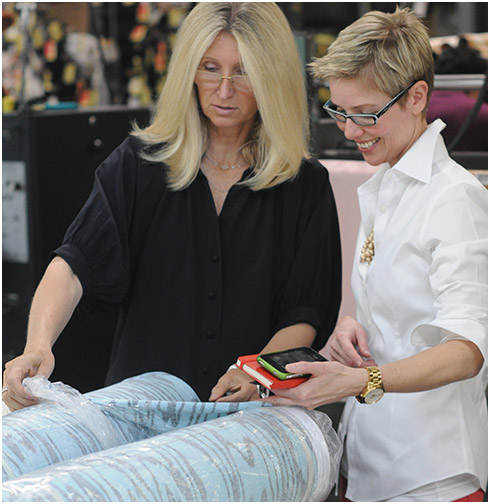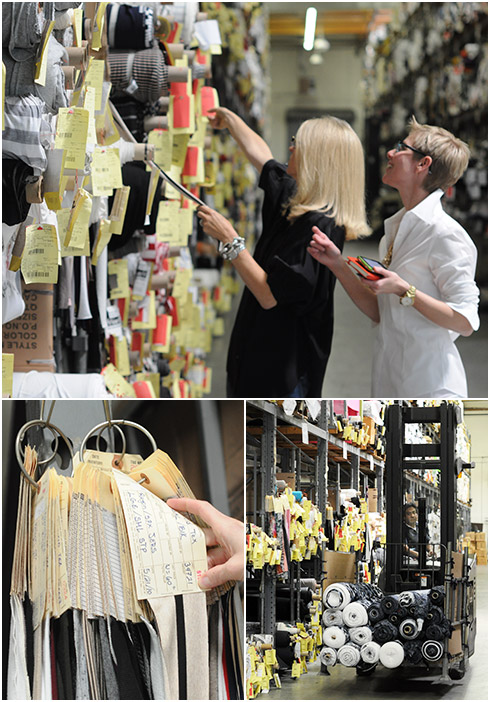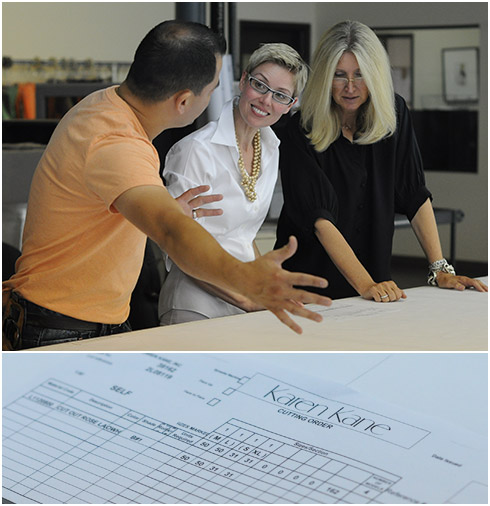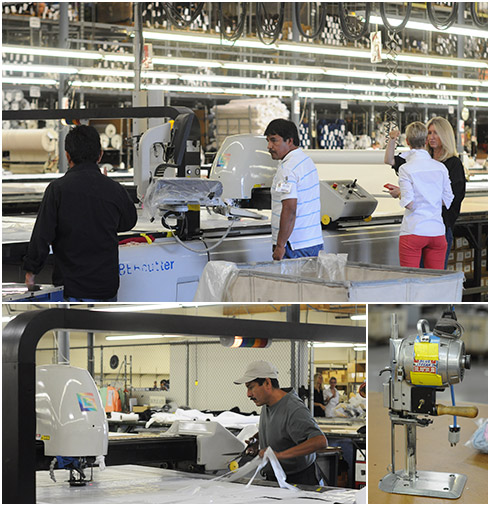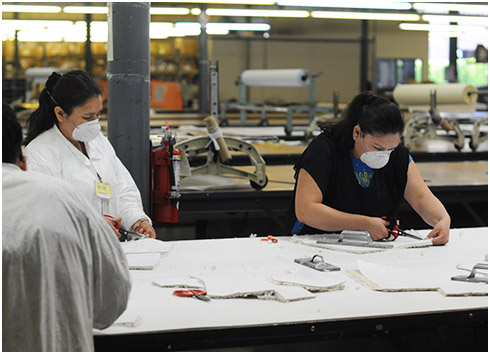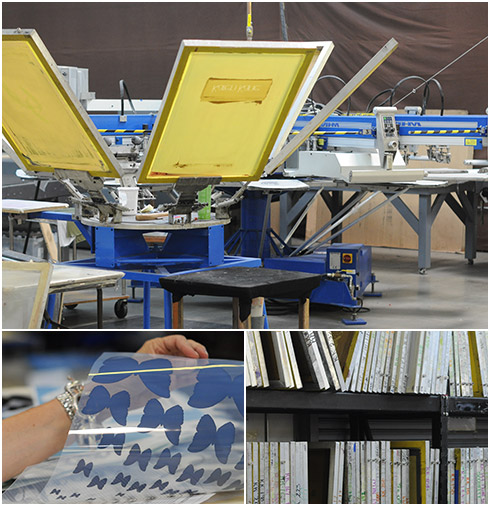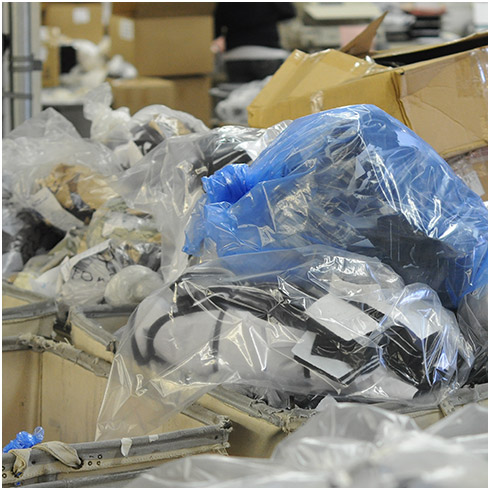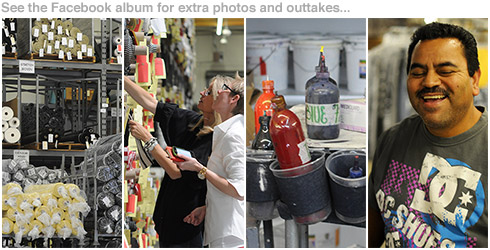This is the third in a series of sponsored posts where we look behind the scenes at American clothing company, Karen Kane.
Last week we took you through Karen Kane’s Design Process and Sample Room, which is where a new garment is born and refined. Once the collections are ready, Karen’s husband Lonnie, eldest son Michael, and a group of account execs and sales reps show the items “at market” several times a year, which is where fashion buyers from different retailers and boutiques view the collections and place orders. “Coming back from a good market”, as Lonnie puts it, is one of his favourite parts of this business. Karen and her team reap the reward of their hard work when a style comes back with an order for production.
My fashion buying days took me to factories in Asia, Africa and Europe, so I have seen first hand what can go wrong in clothing manufacture. There are many moving parts and production relies heavily on the strength of each link in the chain, so there is lots of room for error. Good grief! Let’s just say that the word “contingency plan” takes on a new meaning in this business. That’s why I have the utmost respect for clothing manufacturers. It’s an extremely stressful job at the best of times.
The very cool, calm and collected Karen took us around the factory floor, although hubby Lonnie actually runs this side of the show. To use Rag Trade lingo, the “Cut, Make and Trim” process starts right here and it’s abbreviated “CMT”. A final sample that is sold at market, like this gorgeous animal print blouse, receives a cutting order (the sheet that’s attached to the garment) and heads down to the cutting facility.
Karen Kane orders fabric from France, Italy, China, the United States and a variety of other countries. The fabric rolls are inspected as soon as they arrive. You can’t see whether fabric is damaged when it’s on the roll. so onto the inspection machines it goes, where each square inch is checked and double checked. The weight, colour, texture, composition and weave has to be just as was ordered. Fabric that is flawed, or not as the order specified, is returned right away.
Here Karen and I are looking at “approved” fabric. Yes! That means that the order is one step closer to being cut.
When you produce five labels like Karen Kane, there is a LOT of fabric moving on and off the factory floor. Fabric has to be stored before it’s cut. The fabric storage area is gigantic and trying to find a specific set of rolls can be like looking for a needle in a haystack. Enter their effective cataloguing system on the bottom left of the photo above. A swatch of fabric is marked with it’s precise location: Section 39, Row B. How organized and efficient. Love that.
When fabric sits in the storage area, surprisingly, it’s not always safe. Sometimes the factory lights cause it to discolour, or the metal shelving causes indentations that damage the fibres. More problems to solve, which is just par for the course on any given day in the world of clothing manufacture.
The grading process, when ALL the sizes of an order are created from the sample pattern, happens before the pattern pieces are actually cut. This gentleman above is a pattern grader, and it’s his responsibility to make sure that the graded sizes and their ratios are correct because he operates the grading machine. He works directly from the cutting order and adheres to the size curve. Years ago, I used to grade patterns by hand and it’s an extremely finicky and labour intensive process. So glad that we don’t have to grade things by hand anymore!
Once the patterns are graded, the information is loaded onto a computer where it’s an absolute skill to lay out the pattern pieces so that there is minimum fabric wastage. The lovely gentleman behind this computer plays around with many, many pattern laying configurations until he has the optimum solution. So essentially this process is still done by hand. Computers do NOT work out the best pattern lay. Isn’t that amazing?
At last we’re ready to cut the fabric! The cutting tables take up almost the entire length of the factory floor. The fabric is unrolled and layered across the length of the tables. It stretches as it’s unrolled, so it has to “rest and recover” for a couple of days before it sees the blades of a cutter.
The layers of fabric are heavy, so when the time comes to feed it through the cutter, air blows through little holes on the cutting table to assist movement.
A template of the pattern lay is fed into a Gerber Cutter, an enormous computer operated machine that moves on tracks across the factory floor. It moves from one cutting table to the next, cutting out pattern pieces through hundreds of layers of fabric. But you know how it goes, all machines break down, and when that happens, out comes the electric hand cutter that you see in the bottom corner of the above photo. Everything has a contingency plan.
In some instances, fabric has to be cut completely by hand, which these fabulous ladies are doing with shearling fabric. You are not allowed to cut the hair of shearing fabric, just the backing, so no fancy Gerber cutter here. It’s all controlled by the human hand. The masks are to prevent fabric fluff from irritating nasal passages.
Some styles require a printed pattern somewhere on the garment. The screens are cut from a prescribed design and the panels are printed and dried right on the premises. The factory keeps a library of screens on hand.
The cut pattern pieces are finally bundled up, per order, into bags ready for the sewing rooms. The bundles also contain everything else required to make the garment, like zippers, buttons and labels.
The next part of the process is the “make” part of CMT, which doesn’t actually happen on the premises. The bundles of cut fabric and trim are delivered a few of blocks away to a company that Karen Kane contracts for sewing the garments. The almost completed product is delivered back to Karen Kane for the finishing touches, which constitutes the “trim” part of CMT. You’ll hear all about that this afternoon.
Well, that’s just an ordinary day at Karen Kane. It is a complex operation with lots of room for error, where the term “contingency plan” takes on a whole new meaning! Lonnie and Karen have to deal with new challenges every day. And they take it all in their stride.
This is the third in a series of posts sponsored by Karen Kane:
- Design at Karen Kane
- Karen Kane’s Sample Room
- Clothing Production at Karen Kane (this post)
- Karen Kane’s Trim and Dispatch Departments
- Karen Kane the Family Business
For more information you can follow @Karen_Kane on Twitter or like their page on Facebook.
